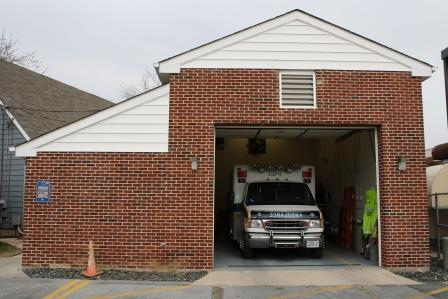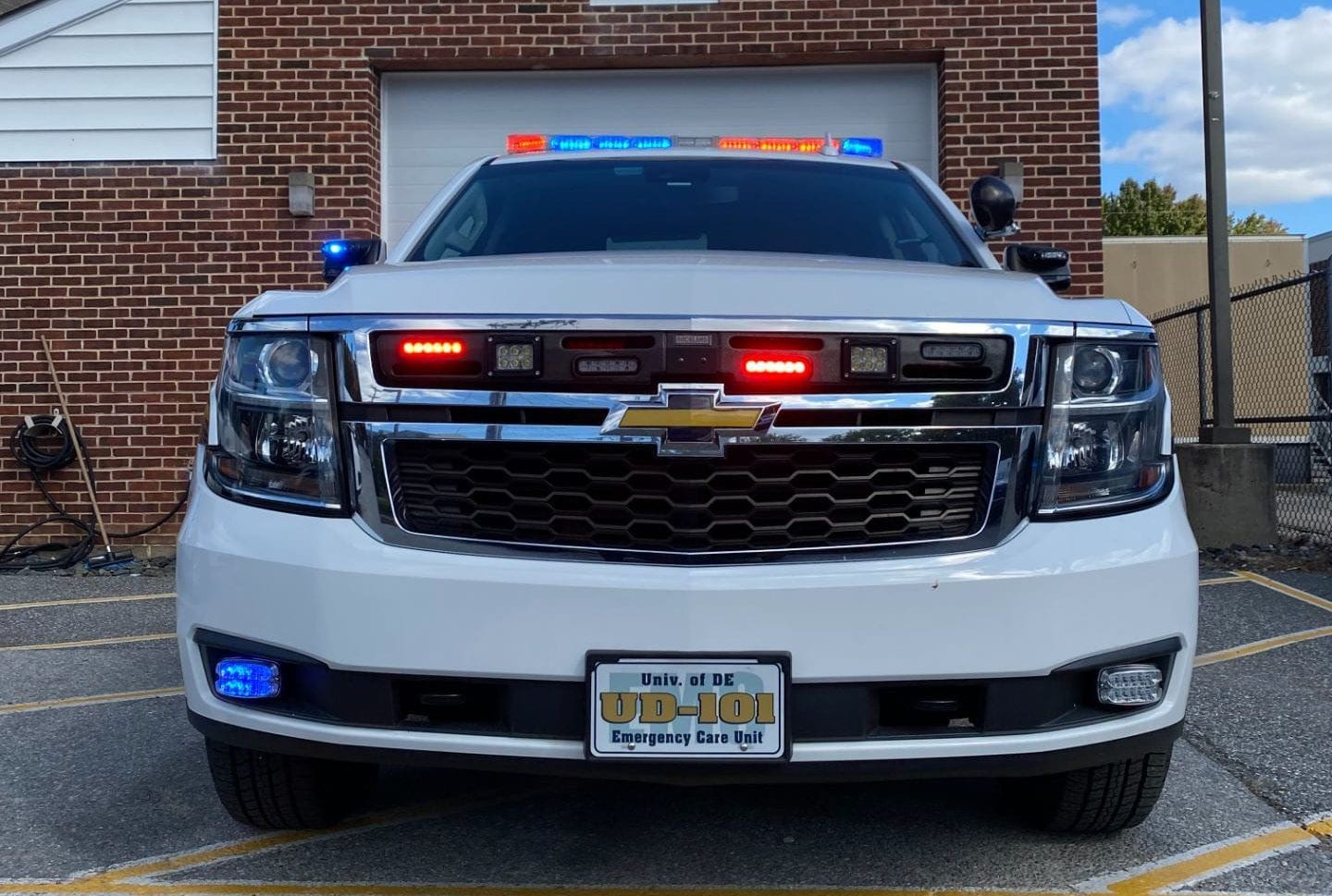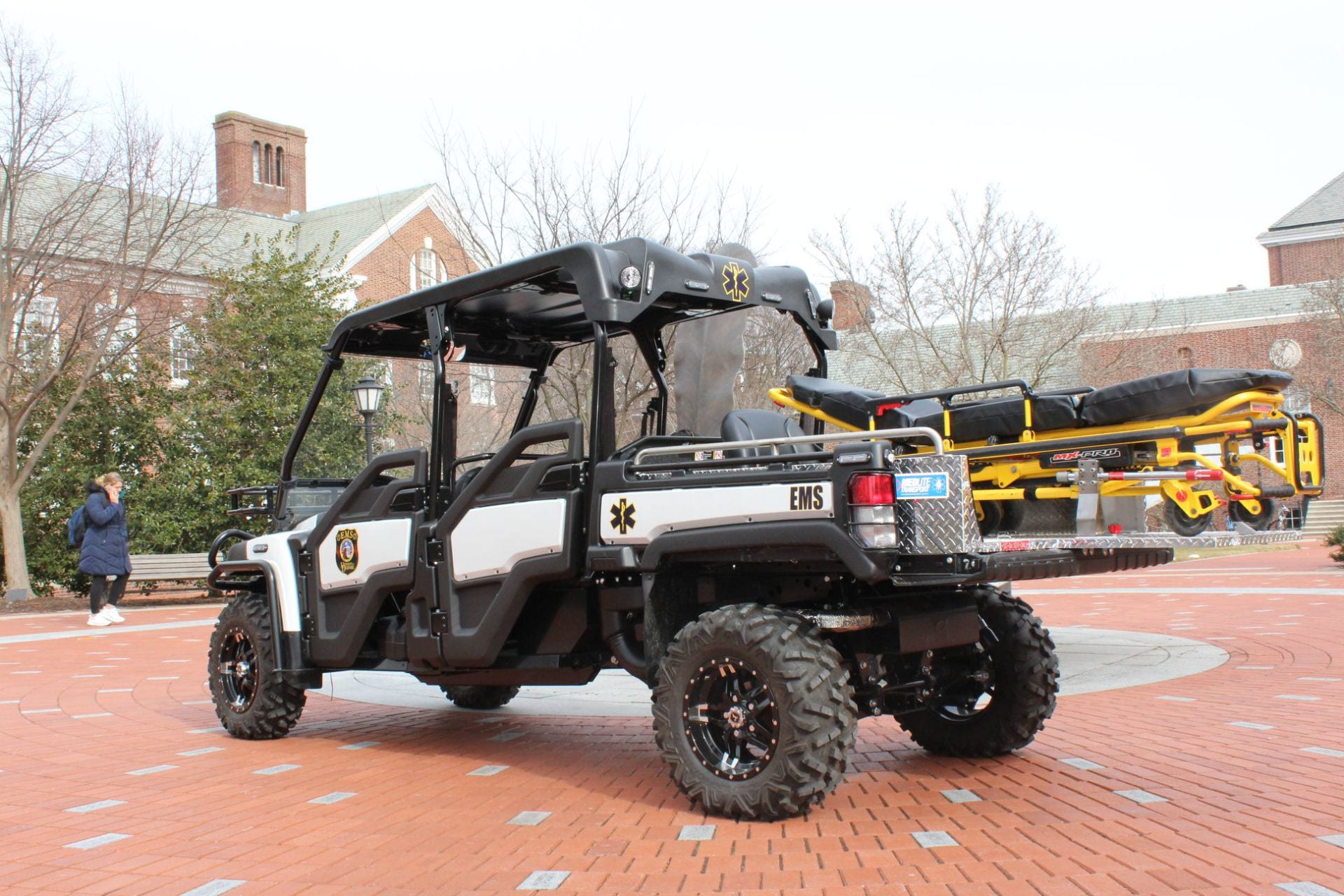
Day-to-Day Operations
As a Basic Life Support (BLS) unit, UD-1 is first due the University of Delaware campus and second due to the surrounding community, through an agreement with Aetna Hose, Hook and Ladder. When needed, Advanced Life Support (ALS) is provided by New Castle County Emergency Medical Services (NCCEMS) in the form of ALS sprint cars with 2 paramedics on board. UD-1 then transports and the paramedic(s) in our unit.
Dispatching & Communications
In the event UD-1 is needed to respond to a 911 Emergency, the crew is contacted by New Castle County Fire Board via pagers or by radio. UD-1 communicates with NCC Fire Board and UCOMM (University Communications) using both portable and mobile radios.
Crews
The crew consists of a minimum of two National Registry and Delaware State Certified EMT-Basics and can have up to two attendants on board. The additional crew members on board are something that is unique and demonstrative of our commitment as a teaching ambulance. Usually additional crew members consist of a certified EMT being evaluated, an EMT student, or a new member gaining experience. This enables them to gain hands on experience in the field while studying to become an EMT.
UD-1 prides itself on providing a high level of care to all patients while providing an introductory learning environment for its members into the operations of EMS. Every year UD-1 responds to over 500 calls ranging from sick persons to car accidents to cardiac arrests and handles each with professionalism and care.
State Certifications
State Certification: UD-1 is certified annually by the State of Delaware Fire Commission as a 911 BLS transport unit.
State of Delaware EMT-Basic: All drivers and technicians, and many of our members are certified as National and State of Delaware EMT-Basics. It is a requirement within one year of joining UDECU to become a Nationally Registered EMT-B.
Services
Emergency Response
Event Standby
Public Education
Crew Structure
UDECU is based on a hierarchical system that encourages education and hard work. There are five ranks (and one additional intermediate rank) based upon a person’s accomplishments in the organization.
Level 1 – Probationary Member: A new member in their first semester of our organization. They are expected to complete our probationary training, including learning vitals, patient movement, and our basic operations. Members will earn their AHA CPR card.
Level 2 – Attendant: A member working to obtain their EMT, or an out of state EMT but have yet to aquire their DE-EMT. These members must have successfully completed their probationary semester.
Level 3 – Assistant Technician: A member who is both a NREMT-B and a Delaware EMT-B. An Assistant Technician is expected to take a leading roll in the delivery of patient care, under the supervision of a Technician. Assistant Technicains will be given evaluations based on their performance on each call that they lead.
Level 3fp – Field Promotable Assistant Technician: Once an Assistant Techncian has gained experience and demonstrated general proficiency as an EMT, they can be made Field Promotable by a majority vote of all active Technicians and Drivers. As a FP, the member can be temporarily to act in the capcity of a technician for an individual call, under special conditions. For a Field Promotable to be promoted for a particular call, the following circumstances must be present:
- There must be no other Technicians available to act as Technician for the call, within 3 minutes of dispatch.
- The responding Driver must give their approval for the FP to “tech” that individual call.
- The FP must also agree to act as Technician on the call, FP status does not obligate them to do so.
On all other occasions, the FP will operate as a normal Level 3 and is expected to come ride often and receive evaluations.
Level 4 – Technician: A member who has completed all the previous requirements and has passed a Technician test administered by the current Board of Technicians. Technicians are eligible to operate our Gator and Support Vehicles (Tahoes).
The Technician Test examines a candidate’s:
- Knowledge of Delaware 10-Codes
- Ability to proficiently operate the UD and county EMS radios
- Proficiency using map books
- Knowledge of the location and proper use of equipment on UD-1
- Previous evaluations
- EMS skills through practical scenarios.
Once the Technician Test has been administered, the member is made a Technician with the approval of a majority of the current Board of Technicians.
Level 5 – Driver: A cleared Technician member, that has completed all required state and inter-departmental training in order to operate the ambulance on 911 calls.
To become a driver, a member must:
- Pass the Delaware Emergency Operator’s class.
- Log a minimum of at least 24 hours of driver-training in UD-1
- Demonstrate extensive knowledge of locations and staging areas of all University buildings
- Demonstrate knowledge of appropriate routes to all area hospitals
- Receive the approval of a majority of all active UDECU Driver’s
- Pass a driving test with the EMS supervisor
Station and Apparatus
The University of Delaware Emergency Care Unit is located at 184 South Chapel Street in Newark. When founded in formation in 1976, UDECU occupied the brick garage shown below. The building contains a bay large enough to store one ambulance, several cabinets of storage, and both bikes. Adjacent to the bay, there is a bathroom and a small space which acted as a bunkroom.
Decades later, UDECU also acquired the neighboring house, known as the “Solar House” due to its history as an engineering project. The solar house contains a full kitchen, living room, conference room, two bunkrooms, and three bathrooms. With the additional space, the garage bunkroom was no longer needed and converted into an office for Command Staff. While the solar house has no permanent residents, it is where on-duty members spend their time in between calls. For this reason, you will likely find the Solar House occupied day and night while the University is in session!



UD-1
The primary transport unit of The UD Emergency Care Unit. This BLS unit has a 2012 Ford E450 chassis with a Lifeline Superliner module. It was placed in service September of 2012. It is equipped with Whelen LED emergency lighting, a Howler siren, air horns, and stocked to meet all standards for State of Delaware BLS Ambulances.

UD-101 & UD-102
This quick response vehicle used by members on duty to respond to incident scenes. These are 2018 Chevrolet Tahoes given to UDECU by the University of Delaware Police Department. They are equipped with an AED, Primary Bag and Suction Unit. When needed, the Tahoes are able to tow our trailer.


GATOR-UD
This John Deer Gator XUV 4 Seater is used as a quick response vehicle for incidents other response vehicles can not reach. It is capable of navigating through standby crowds and ushering patients to a transport capable ambulance. The Gator also travels down state to provide coverage for the Firefly Festival.

UD Bike 1 & 2
Used primarily at standbys to provide a quick response unit to areas where ambulances or other larger vehicles may be delayed in responding. The “Bike Team” gets its most use at football games where it is dispatched first to nearly every incident on the Stadium Grounds.